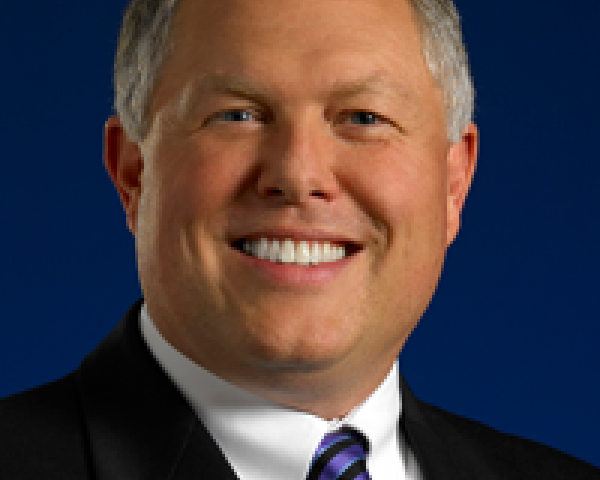The wellbeing of our workforces is vitally important because it affects both the top- and bottom-line performance of an organization. Programs that focus equally on the personal health of employees and their professional productivity needs are becoming essential to help companies attract and retain talent. This was the subject of a recent “Out Front Ideas with Kimberly and Mark” webinar.
Our guests were:
- Fikry Isaac, MD, MPH, the CEO of WellWorld Consulting and the retired chief medical officer, VP global health at Johnson & Johnson.
- Andrew R. Gold, Pitney Bowes, VP, total rewards and HR technology
- Alanna Fincke, SVP, director of content, meQuilibrium
- Brad Smith PhD, VP, analytics and reporting, meQuilibrium
Why It Is Important
Wellbeing benefits individual workers as well as entire organizations and communities. It is a holistic approach that includes the mental, emotional, physical and financial health of the person.
First, wellbeing is a way to engage employees with one another and management within the company. Activities such as walking and fitness programs allow groups to come together in a fun way that helps build trust and camaraderie.
Wellbeing programs also can help employees become healthier by teaching them new habits and helping them get treatment for chronic conditions that they may not be aware they have. A screening, for example, can uncover risk factors for certain illnesses and help workers get the right medical care they need. The employee gets healthier and can continue working and earning a living. From the company’s standpoint, this helps improve productivity and controls the cost of medical care, so it is a win-win for everyone.
From a broader perspective, the environmental factors within and outside of the workplace also affect the overall wellbeing of the individual and should be addressed. The boundaries between work and home life have become blurred, putting added stress on workers. Wellbeing programs need to take into consideration many aspects of the person’s work and home life. They need to help the worker become resilient to be able to handle the demands and pressures of both.
Creating a culture of health within the workforce is paramount to the success of a wellbeing program. Any program or service within a company has to be ingrained in the culture for it to be successful. A wellbeing program needs to be part of the fabric of the business mindset so all employees – especially leaders – embrace the idea of a culture of health.
Resiliency
Resiliency is a newer concept that is gaining attention in workers’ compensation and on the benefit side. It is an important component in workplace wellbeing.
Today’s business climate is more stressful than ever. The pace of work makes it difficult to keep up. The work-life merger adds to it. All of this takes a toll on employees.
The latest trends show:
- 60% of employees report high stress.
- The annual cost of stress is $300 billion.
- One million workers are absent from work every day.
- 30% of the population has undiagnosed mental health issues.
Resilience teaches employees how to adapt to the changes and stresses of today’s work. While we cannot change the things that happen at work or in our lives, we can learn to change how we react and manage the stress. It is not something we are born with. There are scientifically based teachable skills to help us be more resilient. We can learn to control our thinking and how we react to pressures.
Evaluating the Need for a Wellbeing Program
Every company is different, and it is important when considering a wellbeing program to assess the organization’s needs against the value and impact of any given program. Some companies develop their own internal systems while others use commercial measures. Johnson & Johnson for example, surveys workers annually to determine where each person is on the health spectrum and how satisfied they are with the programs and services offered. The company also has a value system of management to assess the performance and engagement levels of leaders in the various business units.
See also: Wellness Programs Lack Health Literacy
There are also a variety of tools available on the market to assess the need for wellbeing programs.
- The Gallup-Sharecare WellBeing Index looks at the key factors that drive greater wellbeing for individuals and populations. It is the world’s largest data set on wellbeing.
- Employee engagement surveys assess the level of employee engagement in their organizations and their perceptions of management’s involvement.
- The Centers for Disease Control and Prevention Worksite Health Scorecard designed to assess whether companies have implemented science-based health promotion and protection interventions.
- The Health Enhancement Research Organization (HERO) Scorecard is designed to focus on best practices for promoting workplace health and wellbeing. It shows what may be missing, the need and what employers can do to build a solid wellbeing program.
Pitney Bowes assesses the needs of its employees by talking to them directly and looking at various data. Feedback sessions, surveys and discussions with various department heads can reveal trends in a company that can be addressed through wellbeing programs. An important point in evaluating the workforce is to look at it holistically, not just a specific injury.
Solutions for Employers
Providing access for employees and their families to well-defined services can be effective in improving the wellbeing of a workforce. For larger corporations, onsite health clinics are ideal for quick issue resolution. They can also provide opportunities for preventive services and access to educational programs.
Access to services for mental and emotional support is another very important service, whether it is through an Employee Assistance Program or an online tool.
Energy management is an up-and-coming area to help with resilience. Companies that utilize it assess the energy level of their employees and provide training to increase their energy.
The number and types of programs that are available can seem overwhelming, but not all programs work for all companies. Employers need to identify those that fit the needs and culture of their own workforce.
One solution that companies are using is called meQuilibrium. Two of our panelists were from the firm, which uses behavioral psychology and neuroscience to help people manage stress. We typically do not include specific vendors in our webinars, but this is one instance where we thought it would be worthwhile.
meQuliibirum is a digital tool powered by data-driven insights that measure and benchmark. It is a skills-based learning product that begins with an assessment to determine how the worker reacts in certain situations, connects with his community, his level of sleep and a host of other issues. The user is then given tools to help him become more resilient.
Measuring Outcomes
Measuring the success of a wellbeing program should take into consideration both the effects on workers and the return on investment for the company. One technique is to look at the four Es: enrollment, engagement, efficacy and experience.
- Enrollment is first and foremost because a program can’t have a significant impact on the bottom line if only a few employees are involved. Companies that have successful wellbeing enrollment use grassroots methods to spread the word, starting with senior management.
- Engagement. Once you get workers in the door, keeping them involved is equally important. The percentage of people enrolled in any given month will tell you the level of engagement, as will how long they stay involved. It’s also important to know what elements of the program they are using.
- Efficacy speaks to the effectiveness of the wellbeing program. Does it deliver what is promised? The best way to measure that is with an employer’s own data. For example, lower use of employee leaves suggests there is an improvement in employees’ resilience.
- Experience refers to whether and how the program is helping employees. Is it changing their lives? Would they recommend it to their families or friends? Do they have stories about life-changing events due to the program? Those can show the success of the program.
The four Es are also applicable to the workers’ compensation program. Enrollment, for example, could pertain to whether and to what extent an injured worker is engaged with case management. Efficacy is also important because we often do not look at the return on investment (ROI) holistically in workers’ compensation across expense, medical and indemnity buckets. A Net Promoter Score (NPS) in workers’ compensation could be extremely valuable. There is an opportunity to use measurements from the benefits side of an organization to help an employer incorporate them into workers’ compensation so vendors and suppliers have a more consistent way of reporting metrics on the company.
HERO is another excellent way to measure success. This national non-profit organization is focused solely on identifying best practices of workplace and wellbeing to improve the lives of employees and their families. The HERO Scorecard can provide an instant assessment of a company’s wellbeing program compared to others in its database.
From an employer perspective, measuring the ROI of a wellbeing program can be difficult. All the various elements work together to drive improvement for workers, so it is hard to see the overall ROI, but you can look at various metrics. Some numbers may not look significant, but are important. An Employee Assistance Program may only have 3% to 6% of employees involved at any given time, but it is important to those workers using it, so it is important to understand benchmarks.
Other metrics that can be considered are things such as weight loss or other changes that measure benefits of the program. Additional metrics may also help, such as the data for care utilization, claims analysis, participation in wellness programs and lifestyle modification outcomes. There really is no one-size-fits-all way to measure the ROI of these programs, but the more details you can get, the better.
Another way to measure the success of a wellbeing program is to look at its return on value; how much workers are engaged in their work based on their perceptions of the company’s support in helping them be healthy and take care of their families.
The financial success of companies that have invested in health and wellbeing can be measured and is sometimes available in various publications. The American College of Occupational and Environmental Medicine, for example, has published studies showing the stock market performance of companies over time to see if there are differences after wellbeing programs have been implemented.
See also: Employee Wellness Plans’ Code of Conduct
Challenges to Implementation
Putting a wellbeing program in place can be challenging, but taking a few extra steps will help.
- Due diligence up front. Especially if you are using a third party, you need to really know what you are implementing. For example, if data is to be exchanged, what data and in what format?
- Communication. One of the biggest challenges is getting the word out to the people who can benefit from the program. Some companies use various marketing tools such as behavioral economics to spread the word. There should also be some way to motivate people to participate. Monetary incentives are one method.
- Effectiveness. It is important to monitor and see what is or is not working within the program and be willing to find a different approach, if needed.
Lessons Learned
Despite a company’s best efforts, not every piece of a wellbeing program will meet expectations. You want to make sure you carefully assess whatever you put in place. Something might be perfect for one organization but not work well for another.
Johnson & Johnson had to abandon a nurse line for employees because it just did not work. Pitney Bowes brought biometrics to company sites to make it more convenient for employees to get their blood drawn and get immediate results. But it turned out that method did not lead workers to take action. Instead, the company now pays employees to see a physician to get the same information. The physician can then persuade them to take action.
You have to look at the data and utilization to see if a particular program is valuable or not and be prepared to make adjustments, or even pull the plug entirely on a service, based on those results.









